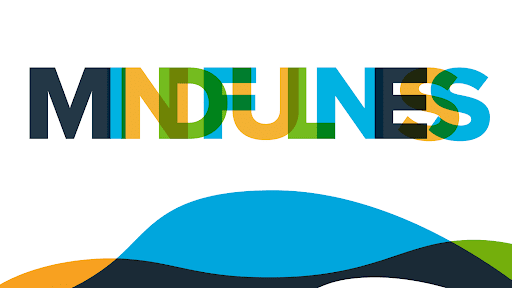
As Ferris Bueller once said, “Life moves pretty fast. If you don't stop and look around once in a while, you could miss it.”1
And he was right! But that doesn’t mean you should fake illness, cut class, steal your best friend’s dad’s Ferrari, and maim your school principal so you can “stop and look around once in a while.”
One of our favorite, and much less dangerous, ways to “look around once in a while” is by practicing mindfulness.
What is mindfulness? For some, it may conjure up thoughts of buddhist monks meditating beneath a cypress tree for hours. Others might think of their yogi, or that one weird dude from college with a ponytail who always had a “cough” and smelled like cloves. Or you might imagine yourself walking in nature, taking a deep breath—appreciating the beauty around you.
Research suggests that mindfulness decreases anxiety and depression, improves immune function, protects against the effects of aging, boosts heart health and concentration, and it may even improve your leadership skills!2
The key to practicing mindfulness is persistence. Many people have tried, and failed, to practice mindfulness because it requires patience, but the benefits are compounding! At Spark! mindfulness means just observing you, your unique perception, what you are feeling, and responding to the question, “How am I?”
Without further ado, in no particular order, here are a few of our favorite mindfulness tips to get you started on your journey to practicing JOY — Just Observe You — and finding yourself.
And he was right! But that doesn’t mean you should fake illness, cut class, steal your best friend’s dad’s Ferrari, and maim your school principal so you can “stop and look around once in a while.”
One of our favorite, and much less dangerous, ways to “look around once in a while” is by practicing mindfulness.
What is mindfulness? For some, it may conjure up thoughts of buddhist monks meditating beneath a cypress tree for hours. Others might think of their yogi, or that one weird dude from college with a ponytail who always had a “cough” and smelled like cloves. Or you might imagine yourself walking in nature, taking a deep breath—appreciating the beauty around you.
Research suggests that mindfulness decreases anxiety and depression, improves immune function, protects against the effects of aging, boosts heart health and concentration, and it may even improve your leadership skills!2
The key to practicing mindfulness is persistence. Many people have tried, and failed, to practice mindfulness because it requires patience, but the benefits are compounding! At Spark! mindfulness means just observing you, your unique perception, what you are feeling, and responding to the question, “How am I?”
Without further ado, in no particular order, here are a few of our favorite mindfulness tips to get you started on your journey to practicing JOY — Just Observe You — and finding yourself.
- Find a quiet, comfortable place to relax.
Ideally, find a place where you can sit undisturbed for at least a few minutes. But the best place to practice mindfulness is where you are now, and with practice you will be able to do it anywhere. - Choose a comfortable seat.
Whether sitting or laying down, whatever is most comfortable for you will provide the best environment. - Focus on your breathing.
Like counting sheep before bed, focus on your breath as it travels through your nose, down into your lungs, and up and back out of your mouth. Try to feel the cool air circulating through your lungs as you absorb its life-giving energy. - Make note of your thoughts and feelings. Don’t punish yourself for losing focus.
Do not worry if you can’t keep your mind empty of thoughts, this is not failure. Instead, simply take note of individual thoughts, appreciate them, and send them on their way. If you lose focus, recenter yourself and commit to finishing. The goal is not to obliterate distraction, but to recognize and take control of your reactions to internal and external stimuli. - Start small.
Don’t aim for an hour of mindfulness right out of the gate. This is an ambitious goal, but one that will be incredibly difficult to maintain at first. Instead, start with a goal of 5 minutes, and gradually work your way up as you progress. - Ask yourself questions.
Consider your intentions for the day. What do you want to accomplish? How will you show up to provide the best impact? What issues do I need to address? Set yourself an intention and positively affirm your daily goals. - Ground yourself in your body.
Tense, hold, and relax each of your muscles individually. Start with your feet and move toward your head. If we understand how we feel and listen to our bodies, we can be more present in the goings-on of our daily lives. - Bonus points: get outside!
Nothing compares to the great outdoors, and there are many places to practice these skills. Ground yourself to the earth, appreciate the soft grass, cool river water, warm sunlight, and the pleasant chittering of songbirds. Exercise can also provide an excellent method for practicing mindfulness.
Mindfulness is just one tool we encourage at Spark! to practice JOY—Just Observe You—and answer the question “How am I?” Mindfulness is simultaneously a disciplined practice and an opportunity to understand ourselves so we may better understand and work harmoniously with others.


